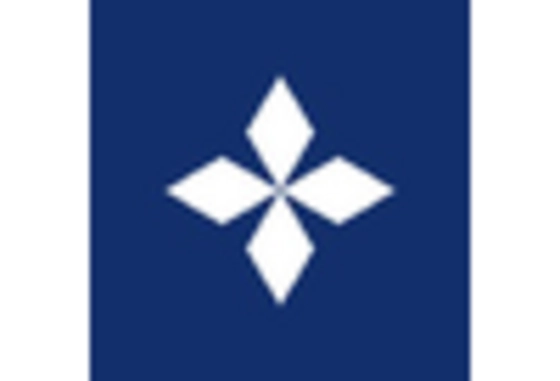Commercial Adoption
The commercial adoption of UAVs is a key driver in the UAV Drone Market. Various sectors, including agriculture, logistics, and construction, are increasingly recognizing the benefits of drone technology. For instance, in agriculture, drones are utilized for precision farming, enabling farmers to monitor crop health and optimize resource usage. The logistics sector is also leveraging drones for last-mile delivery solutions, which can reduce delivery times and costs. Recent estimates suggest that the commercial segment of the UAV Drone Market could account for over 60% of total market revenue by 2026. This growing acceptance and integration of drones into business operations indicate a shift towards more efficient and innovative practices. As industries continue to explore the potential of UAVs, the market is likely to witness sustained growth driven by commercial applications.
Increased Investment
Increased investment in the UAV Drone Market is a significant driver of growth. Venture capital and private equity firms are increasingly funding drone startups and established companies, recognizing the potential for high returns in this burgeoning market. As of October 2025, investment in drone technology has surged, with funding reaching billions of dollars annually. This influx of capital is facilitating research and development, leading to the creation of more advanced and specialized drones. Additionally, government initiatives aimed at promoting drone technology are further stimulating investment. For example, grants and subsidies for drone research are becoming more common, encouraging innovation and development. This financial support is likely to accelerate the pace of advancements in the UAV Drone Market, ultimately benefiting consumers and businesses alike.
Regulatory Developments
Regulatory developments play a crucial role in shaping the UAV Drone Market. Governments worldwide are establishing frameworks to ensure the safe integration of drones into national airspace. These regulations often address issues such as air traffic management, safety standards, and privacy concerns. For example, the implementation of remote identification requirements is expected to enhance accountability and safety in drone operations. As of October 2025, many countries are actively working on harmonizing regulations to facilitate cross-border drone operations, which could significantly boost market growth. The establishment of clear regulatory guidelines is likely to encourage investment and innovation within the UAV Drone Market, as companies gain confidence in deploying their technologies. This regulatory clarity may also lead to increased public acceptance of drones, further driving market expansion.
Technological Advancements
The UAV Drone Market is experiencing rapid technological advancements that are reshaping its landscape. Innovations in battery technology, sensor capabilities, and artificial intelligence are enhancing drone performance and functionality. For instance, the integration of advanced imaging systems allows drones to capture high-resolution data for various applications, including agriculture and surveillance. According to recent data, the UAV Drone Market is projected to grow at a compound annual growth rate of approximately 15% over the next five years, driven by these technological improvements. Furthermore, the development of autonomous flight systems is likely to reduce operational costs and increase efficiency, making drones more appealing to businesses across multiple sectors. As these technologies continue to evolve, they are expected to unlock new use cases and expand the market's potential.
Growing Demand for Surveillance and Security
The growing demand for surveillance and security solutions is a prominent driver in the UAV Drone Market. As concerns over safety and security continue to rise, both public and private sectors are increasingly turning to drones for monitoring and surveillance purposes. Drones equipped with high-definition cameras and thermal imaging capabilities are being deployed for various applications, including border security, crowd monitoring, and infrastructure inspection. Recent data indicates that the demand for drones in the security sector is expected to grow significantly, potentially doubling by 2027. This trend reflects a broader shift towards utilizing technology for enhanced security measures. As organizations seek more efficient and effective ways to ensure safety, the UAV Drone Market is likely to benefit from this increasing demand for surveillance solutions.



















Leave a Comment